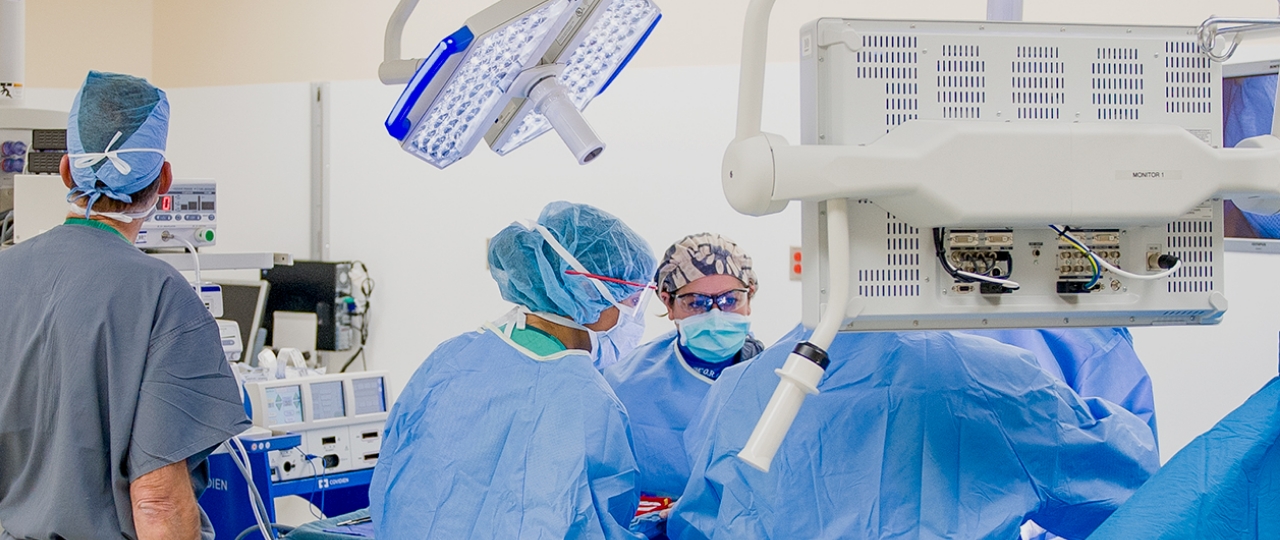Presbyterian Heart & Vascular Care Providers
Our team of highly skilled doctors and clinicians offers a full range of heart-related services from diagnosis and treatment to monitoring.

We have a highly skilled team who can provide a wide range of services from diagnosis to treatment.
The MAZE procedure is a surgical procedure used to treat atrial fibrillation, an irregular heartbeat (arrhythmia). It uses ablation (the purposeful destruction of a specific portion of the heart muscle) to destroy the abnormal electrical pathways.
MAZE procedures can use two types of cardiac ablation, radiofrequency energy (burning) or cryotherapy (freezing), to create a pattern, or MAZE, of scar tissue in the heart to disrupt misfiring electrical signals causing your abnormal heart rhythm. The Convergent Procedure is a combination of minimally invasive surgical treatment with catheter ablation to provide the best results for patients with persistent atrial fibrillation.
Presbyterian Heart and Vascular Care has a skilled team who can provide a wide range of services from diagnosis to treatment. Their surgeons are trained in many different techniques and procedures, many of which can provide you with a shorter recovery period and less hospital time.
If you who have been diagnosed with atrial fibrillation that has not responded to conventional medical treatments, your healthcare team may recommend having this procedure. Your heart doctor will have you undergo several tests.
Atrial fibrillation is treated with the MAZE or Convergent procedure.
Your doctor will give you specific instructions about activity restrictions and changes in your diet or medications that you should make before surgery.
Make arrangements for assistance after your surgery. It will take about four to six weeks to recover to the point where you can drive again, return to work.
For general anesthesia, a breathing tube is inserted through your mouth. This tube attaches to a ventilator, which breaths for you during the surgery.
The surgeon cuts down the center of the chest along the breastbone and spreads open the rib cage to expose the heart. The surgeon then performs the maze or convergent procedure and will remove or sew over or clamp the left atrial appendage to reduce the chance of stroke associated with blood clots in this part of the heart due to atrial fibrillation. We will use MRI-safe stainless-steel wire to close your chest bone. The wire will remain in your body. The rest of the chest tissue (muscle, skin) is closed with absorbable suture.
Expect to spend a day in the intensive care unit. You will have multiple IVs for fluids, medications, and monitoring. You may have chest tubes to drain fluid from your chest and temporary pacing wires.
Cardiac rehabilitation begins while you're still in the hospital. You'll be given an exercise and education program designed to help you recover. It is important that you begin walking as soon as possible for a quicker recovery.
Typically, you'll be discharged from the hospital within a few days.
You may experience skipped heartbeats or short episodes of atrial fibrillation during the first three months after the procedure. This is due to inflammation or irritation of the atrial tissue and the fact that scar tissue takes a while to form. A small number of patients will require a pacemaker after surgery.
A small number of patients will require a pacemaker after surgery.
Medications after surgery may include:
You will have to be careful to protect your sternum for about 6 weeks for the bone to heal. You need to avoid driving, lifting more than 10 pounds for 6 weeks. If you have any of the following signs or symptoms, call your doctor:
Our team of highly skilled doctors and clinicians offers a full range of heart-related services from diagnosis and treatment to monitoring.